
拯救文化遗产
优思建筑事务所设计的展览中心位于长治市,中国山西省的一个三线城市。目前在中国经济和城市转型热潮中,长治市也面临着城市郊区化,即将成为新的CBD。在这次设计中最大的挑战,不仅要让长治市焕然一新,同时也要保留住山西省仅存的几处工业时代老厂房。
Saving Cultural Heritage
Superimpose designed an exhibition centre for Changzhi, a third tier city in Shanxi Province of China. Under the prevailing economic and urban transformation in China, Changzhi faces suburbanisation, which is effecting into a new CBD. The main design challenge for Superimpose was to either erase the current city fabric or try to preserve the province’s fewest remaining industrial heritage.
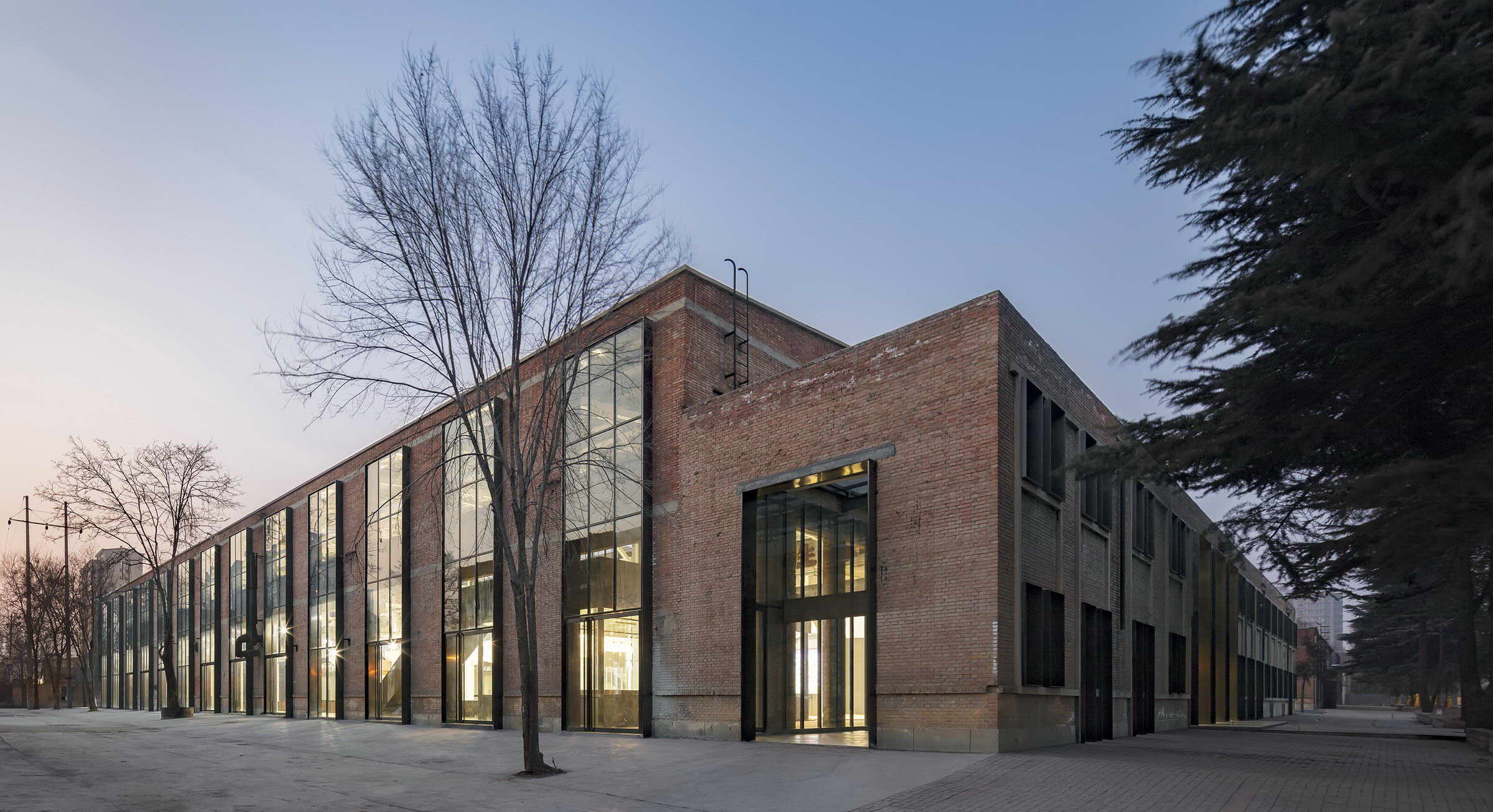
叠术建筑负责长治市CBD的设计,而CBD的规划位置,恰好位于15座轴承厂房区域。这片厂区修建于1945年解放战争时期,有着70年之久的历史,是长治市极具文化价值和历史代表性的文化遗产。甲方于2011年通过拍卖成功地获得了这片土地。在当今经济压力下,甲方和当局计划了一个全新的城市发展方向,却忽视了遗留产物能带来的实际价值。叠术建筑坚信,保护及重饰文化产物的形式与城市发展是可以并存的。
Superimpose was appointed to take part in the CBD design. The future CBD is planned on a site, which has more than 15 former bearing factories built in 1945 for the Liberation War. The 70 years old heritage embodies a significant historical and cultural value. In 2011, the client successfully acquired the land through auction.With recent economic pressure the client and authorities planned a completely new urban development, ignoring the actual added value of the heritage. Superimpose strongly believes city growth can be carried out in the form of preservation and regeneration.
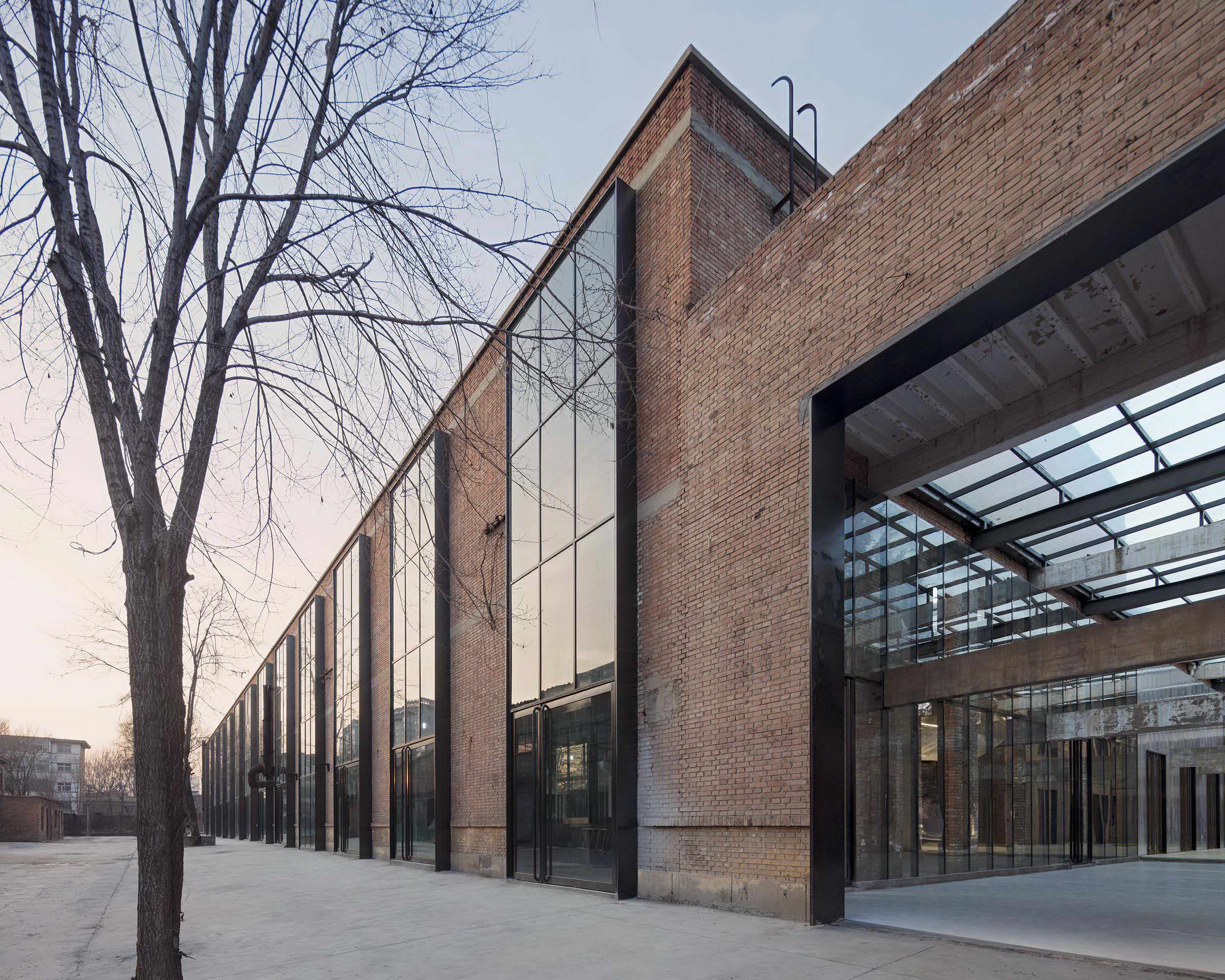
为了说服甲方和政府保留老厂房,优思建筑借鉴和展示了国内与国际的一些成功案例,如北京798艺术园和1933上海屠宰场。甲方在文化遗产周边的开发区域,也会因此增值不少,与甲方的市场团队营销构想达成一致。实际上优思建筑说服了政府和甲方保留了至少70%的文化遗产,并成功的转型为“文化创意园”。
In order to convince client and government to preserve instead of demolish, Superimpose referenced to successful local and international regeneration examples, such as 798 Beijing Art District and 1933 Shanghai Slaughter House. Cultural heritage as added value to the surrounding developments, owned by the same client, generated vision alignment with the client’s marketing team. Eventually Superimpose successfully convinced both authorities and client to preserve and revitalise at least 70% of heritage into a “Cultural Hub”.
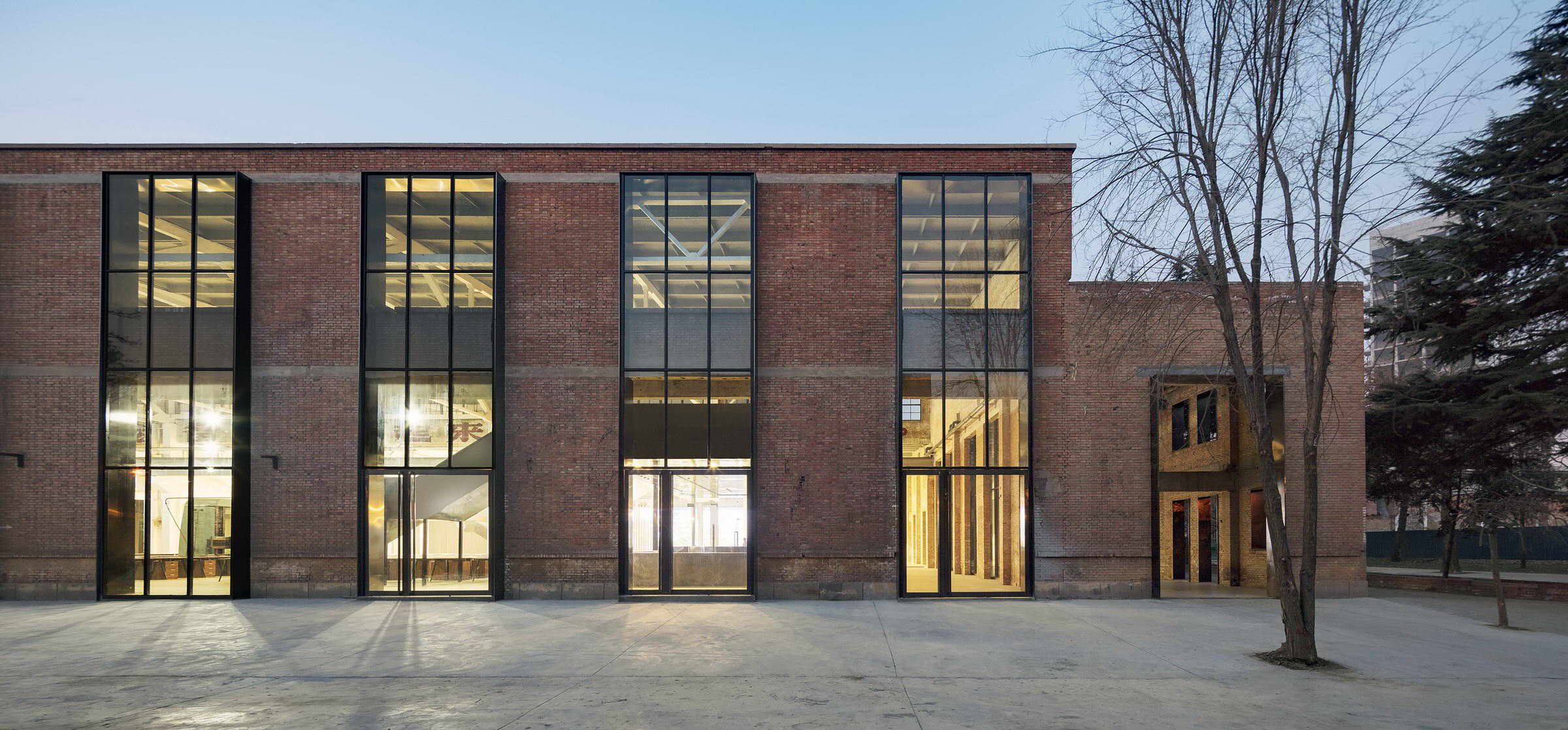
作为“文化创意园”的一部分,优思建筑在老厂房的第一处也是最大规模的改造成果区域 ----“长治博览中心”,主要功能:展览中心,政府会议中心, 办公空间和大礼堂。
As part of this ‘cultural hub’, Superimpose regenerated the first and the largest of the former factories into the ‘Changzhi CityExpo’, which will host as an exhibition centre, a government-meeting centre, office spaces and an auditorium.
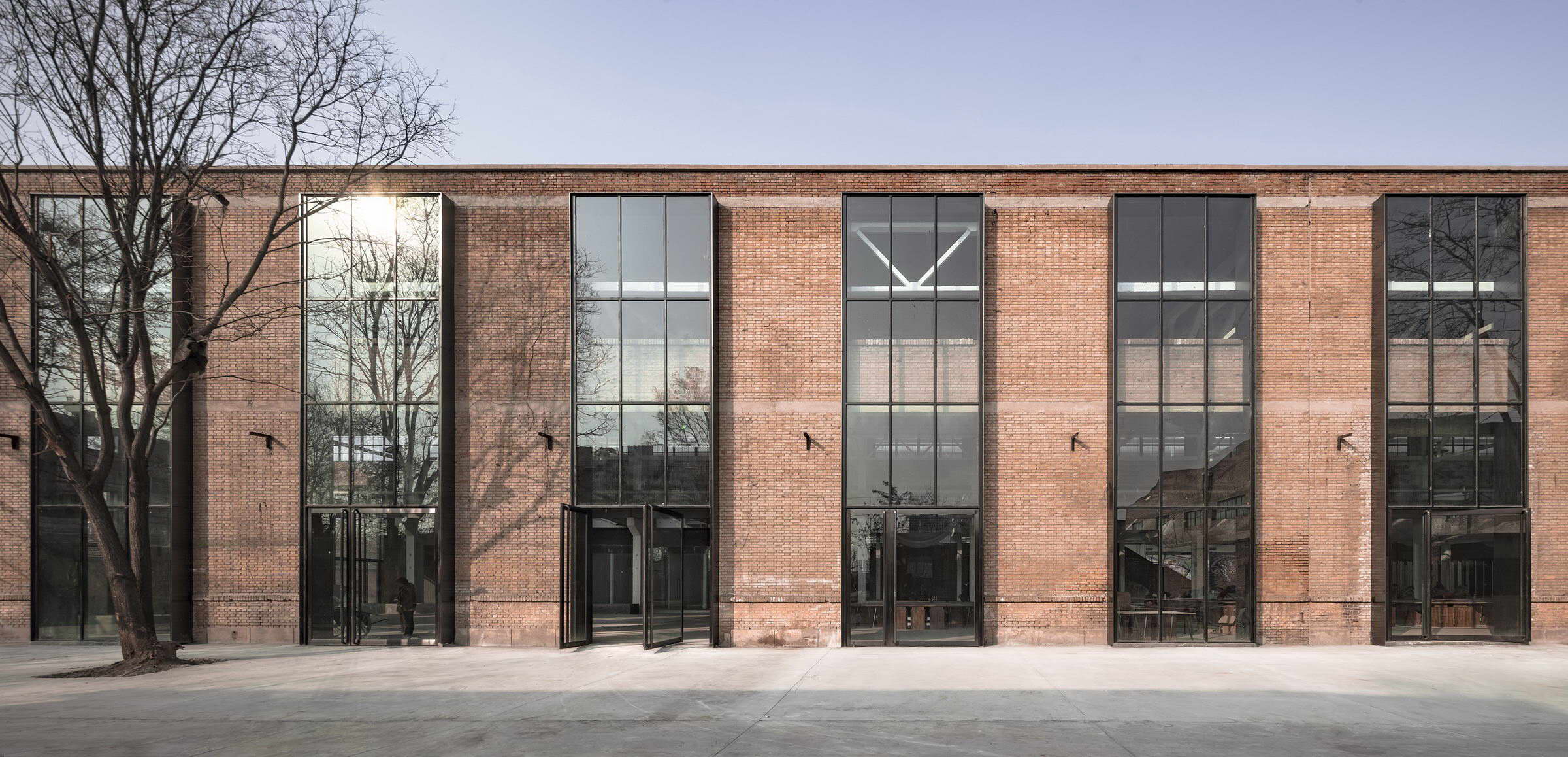
目标:展示独一无二的空间品质
优思建筑在“城市展览中心”主要设计方案中,保留了厂房原有的特有元素,融入了少量恰到好处的当代建筑设计,恢复其独特空间品质的同时,也实现了博览会中心的功能性。厂房建筑本身特有的反复结构元素,具有时代感的标语和规律的立面设计。原始的砖墙非常具有工业感,为了适应当前的需求,优思建筑对立面进行了一系列的改造设计。
Aim: Revealing the unique spatial quality
Superimpose’s main design strategy for the ‘City Expo’ was to investigate the original distinctive elements of the factory and insert minimum architectural interventions to restore the spatial quality and simultaneously provide the required programmatic functionality of the exhibition.Key features of the factory are the repetitive structural frames, the unique and wall-painted propaganda slogans, and rhythmic façade openings. The original brick façade is robust, rhythmic and designed for industrial purposes. To adapt and accommodate the current needs, a level of intervention is introduced to the facade.
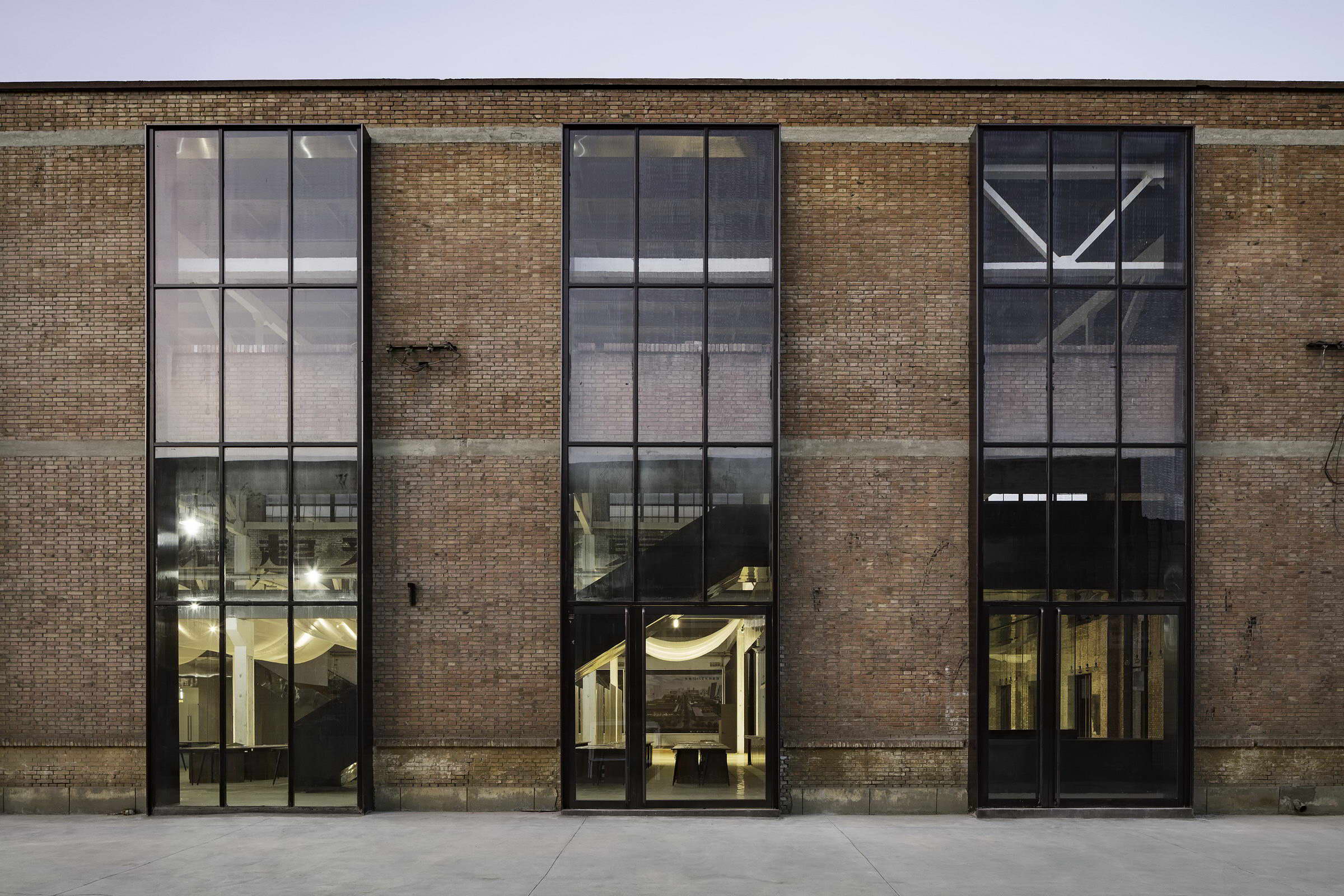
原轴承厂东面扩建了一个结构密集的办公区域。优思建筑提议拆除所有的室内扩建区,改造成一个半开敞的空间,作为博览中心的主入口,使厂房原始立面表现出来。扩改的本意是通过不加任何多余元素重构原始门窗,提升入场秩序性和可访性。通过外突的黑色金属框及透明双层玻璃强调了厂房南立面的节奏,同时转轴门的设计也便于户外的活动。
The original load bearing factory façade was concealed by an office extension on the east side of the factory that had a comparatively denser grid wall structure. Superimpose proposed a veranda by removing all the interior subdivisions of the extension, revealing the original factory façade and made this into the main entrance of the Exhibition Centre. The essence of the extension is kept by framing the original windows and doors without any infill. The glass roof veranda offers a sequential arrival space, which pronounces the main entrance and promotes accessibility. The repetitive nature of the South façade is emphasised by replacement of protruded black aluminium frames and clear double glazed windows, with operable pivot doors for outdoor events.
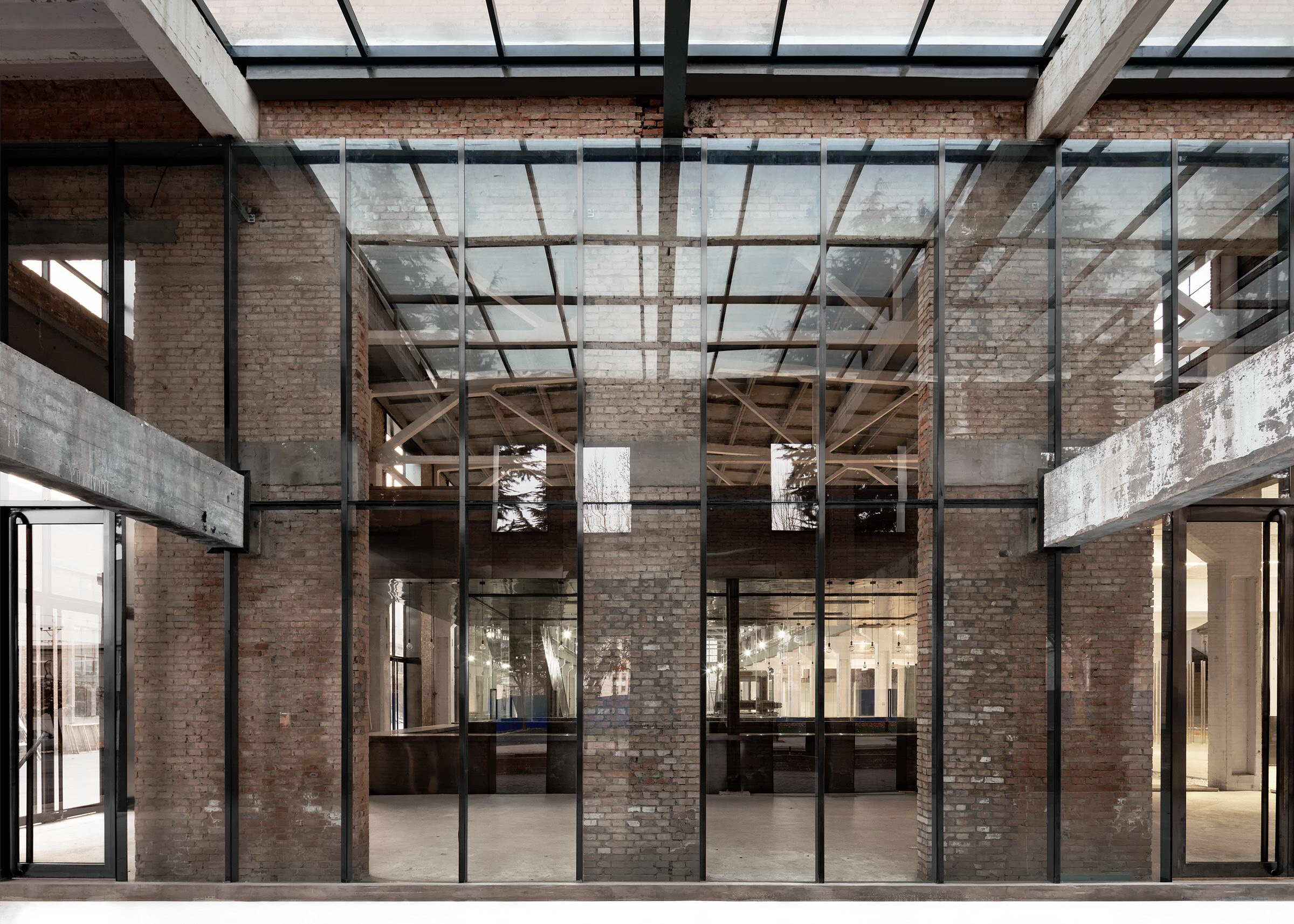
优思建筑没有对厂房水泥地面进行任何挖掘,而是在水泥地上方设计了一个宽敞,位于正中央的抬升 “T台”。“T台”横跨东西两面,连接了整个展览中心。同时抬升的“T台”也巧妙地隐藏了所有的电线和管道系统。
For the interior Superimpose proposed a wide central ‘catwalk’ which hovers above the existing concrete floor. This catwalk spans from the East entrance to the West of the factory and connects the entire exhibition program. At the same time the raised ‘catwalk’ provides a smart solution to hide all the ductworks and cables without excavating into the existing floor.
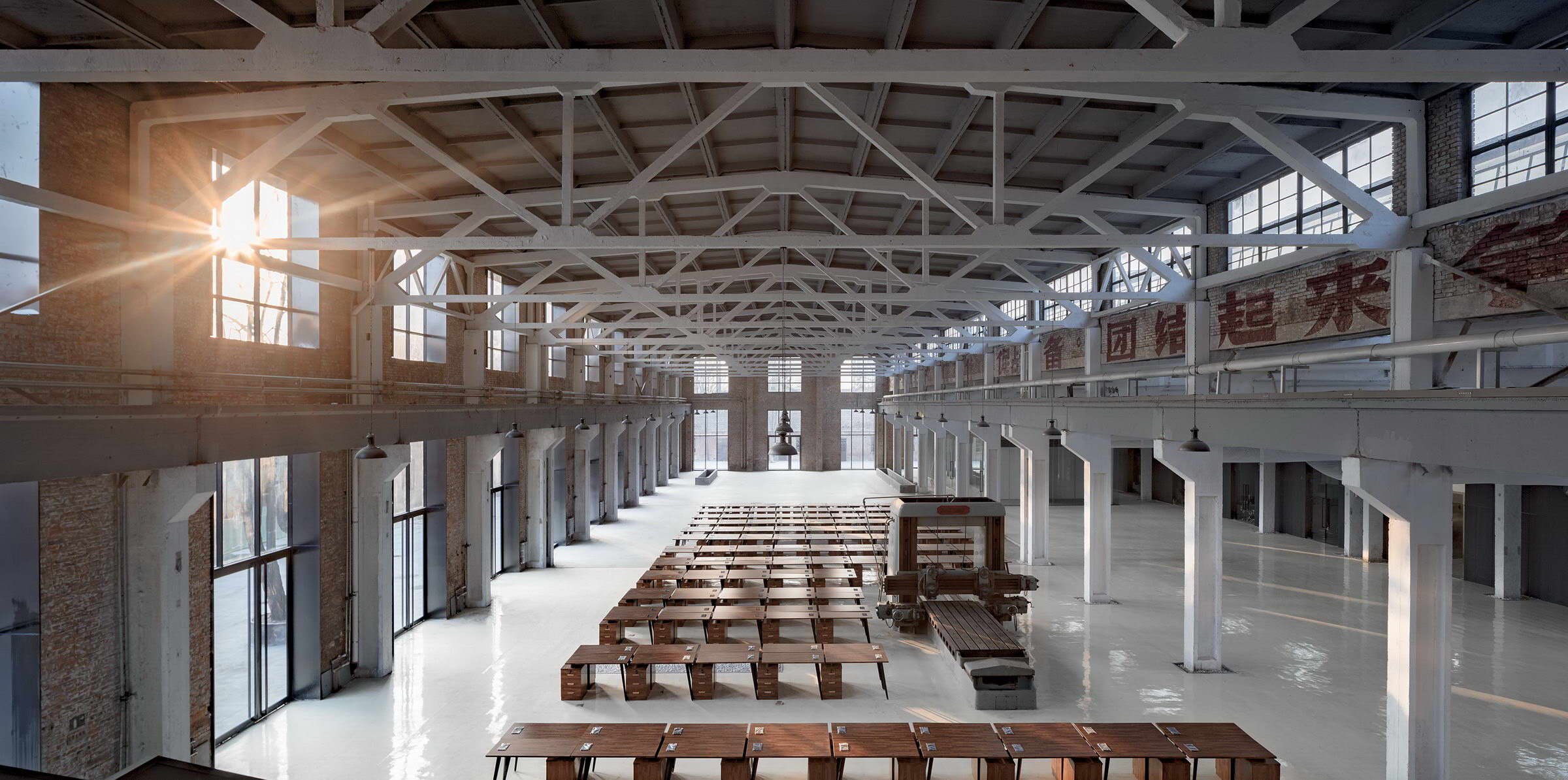

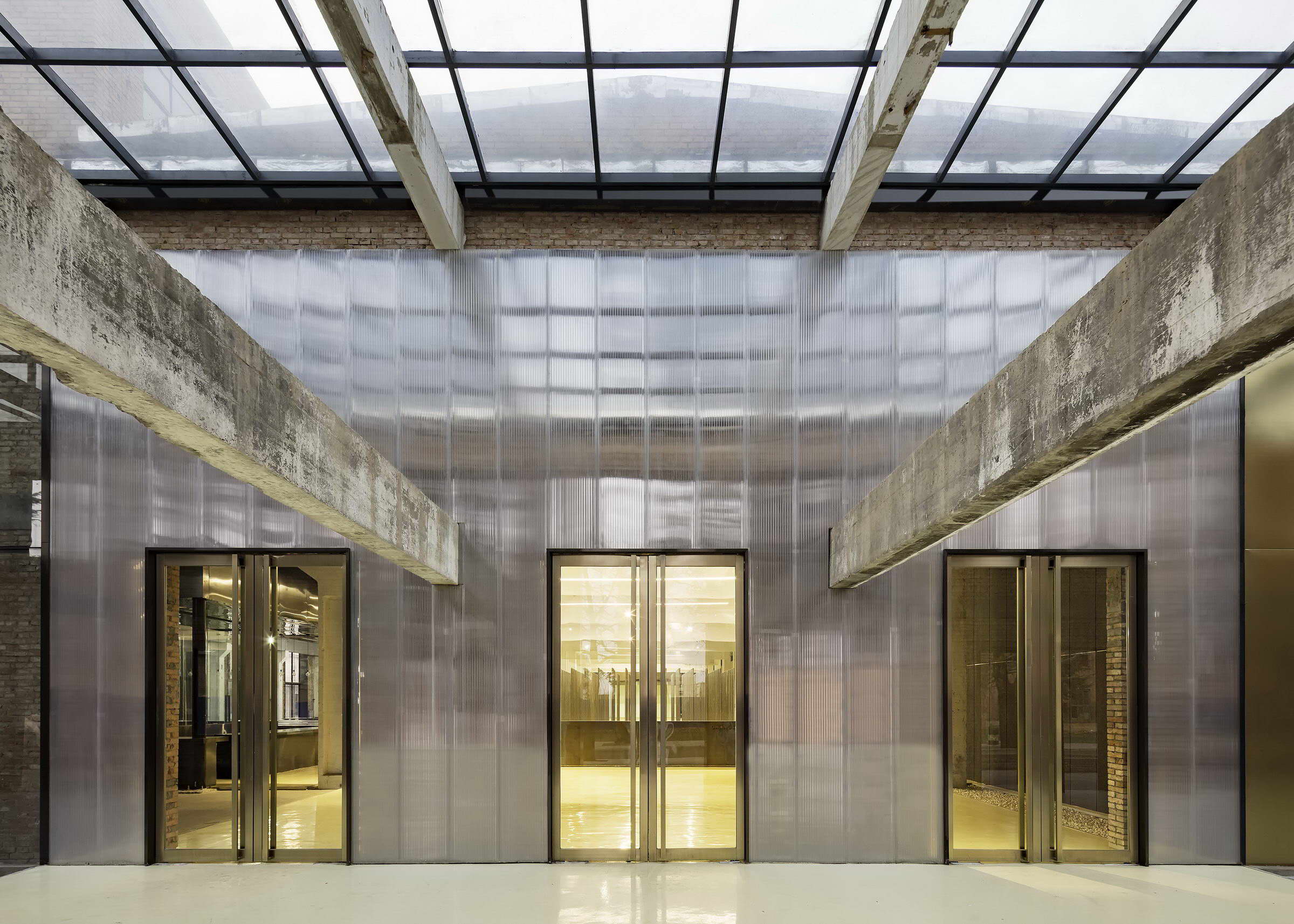
天花垂挂的白色金属网“面纱”与中央“T台”遥相呼应。“面纱”悬挂在横梁与柱子间,完美地阐述了建筑本身的结构韵律,同时也柔化了整个空间的工业感。房顶的日照光线透过“面纱”照射进来,这景象奇妙地定义了如何在大空间里体现人性化。金属网帘间和上方都装有灯具,为夜间不同场合提供了多元化的灯光配置。而夹层设计充分的利用了挑高空间,一楼是公共区域,夹层既保留了隐私,也可用作于开放式工作区,图书馆和会议空间。
Coinciding with the central catwalk, a white ‘veil’ metal mesh is hung from the ceiling. The ‘veil’ is hung in between the repetitive beams and columns, articulating the rhythmic structure of the architecture. The application of the ‘veil’ helps softening the industrial space. It filters the daylight from the roof light and defines a human scale within the vast space. Light fixtures are placed in between and above the mesh, creating multiple light configurations for different occasions during the evening. A mezzanine level is strategically introduced to utilised the double height space. While the ground level is for public, the mezzanine level retains privacy for open plan workspaces, library and enclosed meeting space.
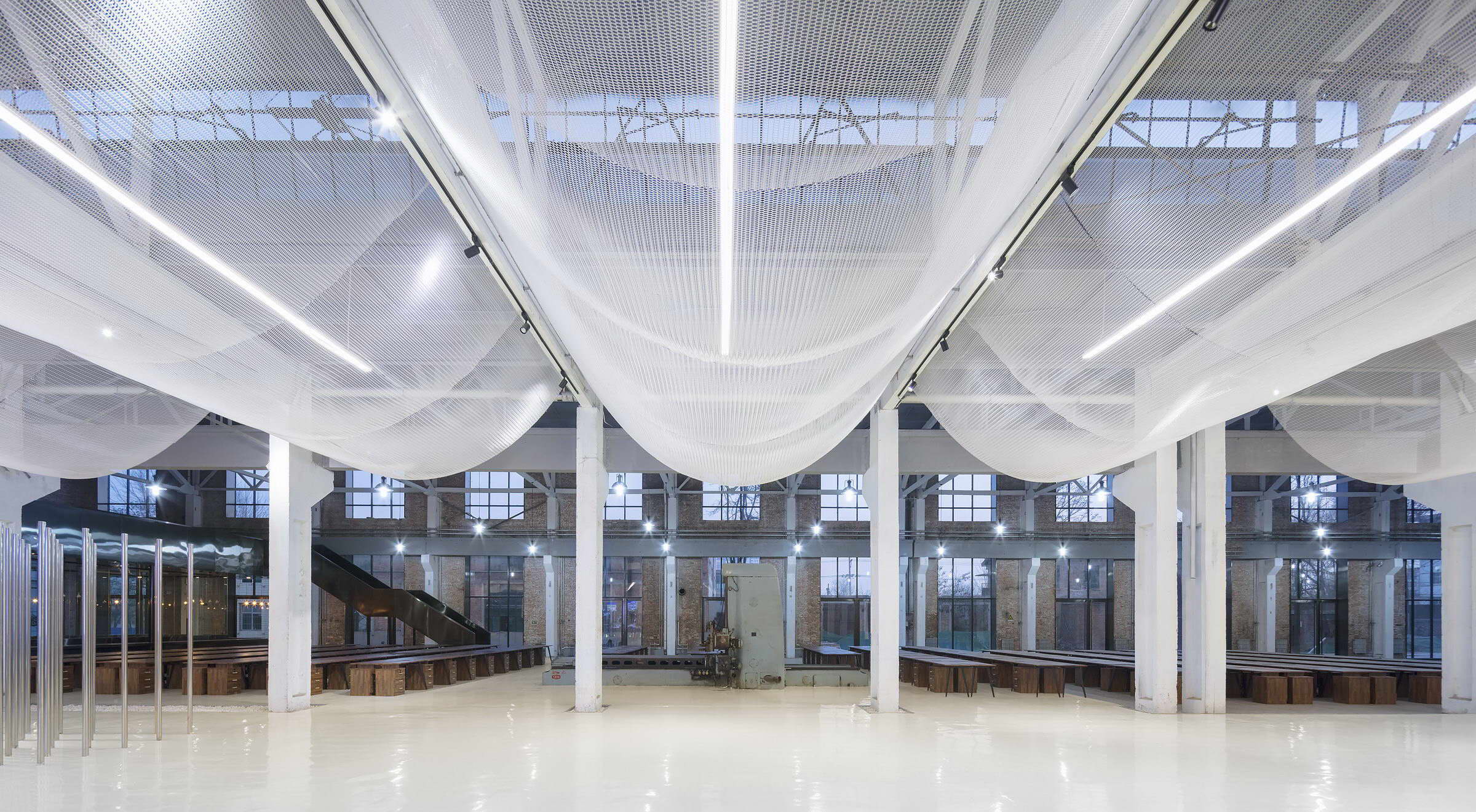
叠术建筑“RE-VEIL”项目在这个全球城市化发展最快的国家,发起了有瞻望性的挑战。这个项目已成为国内发展中城市的参考标准,同样面临城市发展规划和文化遗产如何并存的问题。经过周密地考虑,优思建筑对厂房进行了非常到位的新元素介入和改造,最终保持了建筑原始品质。在设计过程的早期阶段,灵活运用了当地材料和本地建筑工人资源。
Superimpose’s ‘RE-VEIL’ started with a vision to challenge urbanisation in the fastest growing country in the world. The project is a benchmark for similar cities in China, which are undergoing prompt urban planning decisions with cultural heritage. Superimpose embraces the original architectural qualities of the factories by overlaying them with carefully considered and minimalistic modifications and interventions. Materials and labour are all locally resourced and taken into account in the early stages of the design process.

优思建筑在庆祝文化遗产和为长治市民创造共同财产的同时,也帮助甲方和政府,达到他们的目标。如今在长治博览中心墙上还保留着当年的红色大标语,“大胜利”。优思建筑也希望长治展览中心项目作为成功例子,为文化遗产带来更多的转型机遇。
Superimpose wants to celebrate cultural heritage and create places for the people and property that simultaneously helps clients and governments to reach their targets. One of the historic propaganda slogans in the Changzhi Expo states in big red characters: ‘大胜利’ which means, big victory. Superimpose hopes that the Changzhi Expo is a big victory, leading to plenty more successful heritage transformations to come.

项目: Re-Veil
类型:工厂改造
客户: 保密
设计单位:Superimpose Architecture (www.superimpose.nl)
团队:Carolyn Leung, Ben de Lange, Ruben Bergambagt, Pablo Gonzalez, Huimin Xie, Xiaoyu Xu.
项目地址:中国山西长治市
图片版权:Marc Goodwin (@archmospheres) and Valentin Racko
Project Name: Re-Veil
Project Type: Factory regeneration
Client: Private
Partners Superimpose:Carolyn Leung, Ben de Lange, Ruben Bergambagt.
Design Firm: Superimpose Architecture (www.superimpose.nl)
Team: Carolyn Leung, Ben de Lange, Ruben Bergambagt, Pablo Gonzalez, Huimin Xie, Xiaoyu Xu.
Site: Changzhi, Shanxi Province, China
Social Media:@superimposearchitecture // #superimposearchitecture
GFA: 6,000 sqm
Photographer Credits: Marc Goodwin (@archmospheres) and Superimpose